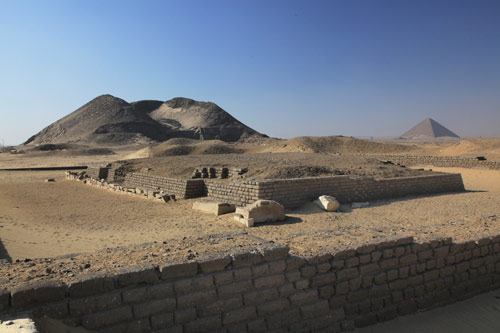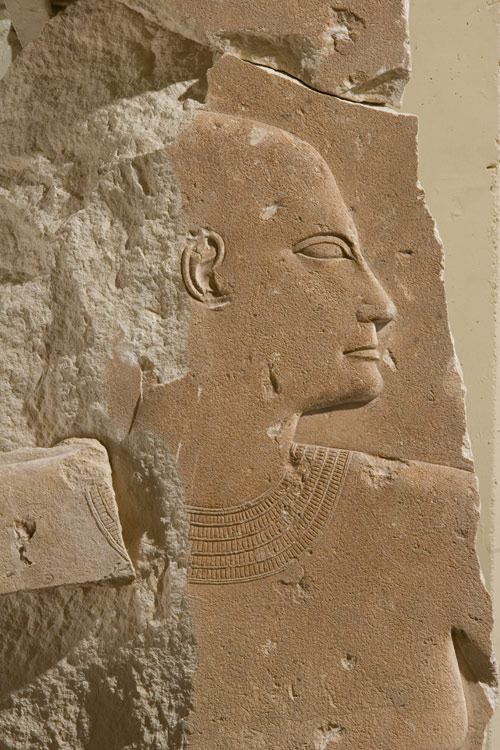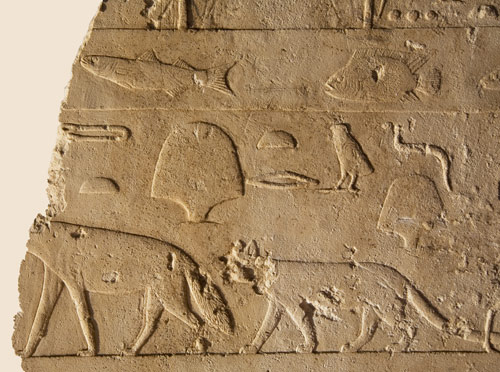 Traveling Exhibitions
Traveling Exhibitions Traveling Works of Art
Traveling Works of Art Conservation Projects
Conservation Projects Excavations
Excavations Fellows
Fellows Exchanges & Collaborations
Exchanges & Collaborations Multiple Items
Multiple Items
The Met Around the World presents the Met’s work via the global scope of its collection and as it extends across the nation and the world through a variety of domestic and international initiatives and programs, including exhibitions, excavations, fellowships, professional exchanges, conservation projects, and traveling works of art.
The Met Around the World is designed and maintained by the Office of the Director.
Traveling
Exhibitions
The Met organizes large and small exhibitions that travel beyond the Museum's walls, extending our scholarship to institutions across the world. See our national and international traveling exhibition program from 2009 to the present.
Traveling
Works of Art
The Met lends works of art to exhibitions and institutions worldwide to expose its collection to the broadest possible audience. See our current national and international loans program.
Conservation
Projects
The preservation of works of art is a fundamental part of the Met's mission. Our work in this area includes treating works of art from other collections. See our national and international conservation activities from 2009 to the present.
Excavations
The Met has conducted excavations for over 100 years in direct partnership with source countries at some of the most important archaeological sites in the world. Today we continue this tradition in order to gain greater understanding of our ancient collections. See our national and international excavation program from the Met's founding to the present.
Fellows
The Met hosts students, scholars, and museum professionals so that they can learn from our staff and pursue independent research in the context of the Met's exceptional resources and facilities. See the activities of our current national and international fellows.
Exchanges & Collaborations
The Met's work takes many forms, from participation in exchange programs at partnering institutions and worldwide symposia to advising on a range of museum issues. These activities contribute to our commitment to advancing the work of the larger, global community of art museums. See our national and international exchange program and other collaborations from 2009 to the present.
 Partially reconstructed mastaba of the high official Sobekemhat, with the pyramid of pharaoh Senwosret III behind it. The Dynasty 4 pyramid of Snefru is to the right in the background.
Partially reconstructed mastaba of the high official Sobekemhat, with the pyramid of pharaoh Senwosret III behind it. The Dynasty 4 pyramid of Snefru is to the right in the background. Reconstructed bracelets of Queen Weret, now in the Egyptian Museum, Cairo.
Reconstructed bracelets of Queen Weret, now in the Egyptian Museum, Cairo. Relief depiction of the high official Sobekemhat, from the east side of his mastaba.
Relief depiction of the high official Sobekemhat, from the east side of his mastaba. Relief depiction from the causeway of Senwosret III, showing fish and animals on an island. The relief probably belonged to scenes showing the seasons of the Egyptian year.
Relief depiction from the causeway of Senwosret III, showing fish and animals on an island. The relief probably belonged to scenes showing the seasons of the Egyptian year.
[active] Egypt
1990, 1992–present
Background
The pyramid complex of the Middle Kingdom pharaoh Senwosret III (ca. 1878–1840 B.C.) is located at Dahshur, a site approximately 20 miles south of modern Cairo. At the center of the complex is the royal pyramid, which now appears to be a mass of mudbrick, but was originally a 63-meter-high structure cased with fine limestone. The king's burial chambers, constructed of limestone and granite, lie beneath the pyramid and contain a beautifully carved red granite sarcophagus. Despite all these preparations, the king was likely buried at Abydos in another tomb he constructed.
A chapel and a modest temple were built respectively against north and east sides of the pyramid; at a later point in the king's reign, a large, innovative temple was constructed to the south of the original complex. To the north and south of the king's pyramid were smaller pyramids with attached chapels dedicated to the royal women of Senwosret III's court. The entire complex was surrounded by a series of mudbrick and limestone walls articulated with niches and recesses.
To the north of the royal complex was a large cemetery for officials who served Senwosret III and his successors. The burial places of these individuals were marked by mastabas, rectangular structures with gently sloping sides and flat roofs. Fragments of inscriptions listing the titles and the names of the owners have been recovered, as well as biographical and historical information.
Excavations
Although most of Senwosret III's aboveground monuments were dismantled and destroyed by ancient stone robbers, several thousand fragments of wall decoration have been recovered from the remains of the temples and chapels. The limestone reliefs are not only beautiful works of art, but provide important information about religious beliefs during the later Dynasty 12. Both the architecture and the decoration of the complex show that this was a period in which beliefs related to the king and his afterlife were evolving.
Important finds from the royal complex also include a small collection of exquisitely rendered jewelry that belonged to Queen Weret. These pieces are now displayed in the Egyptian Museum, Cairo.
The excavation of the nonroyal mastabas to the north of the complex has resulted in the identification of important individuals. These tomb owners embellished their monuments with lists of their official titles and occasionally biographies that describe historical events.
Many of the complex's structures appear to have survived into the New Kingdom, as numerous graffiti left by visitors have been found. After the New Kingdom, the area was used extensively as a burial place for lower-ranking individuals.
Made possible by the Institute of Bioarchaeology, The American Research Center in Egypt, and The Adelaide and Milton de Groot Fund, in memory of the de Groot and Hawley Families.


